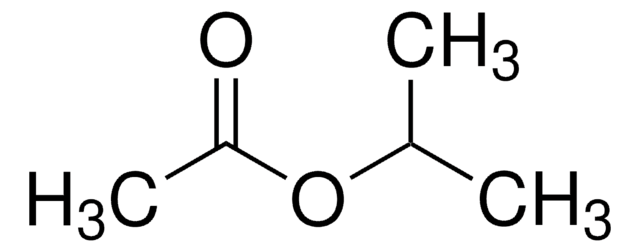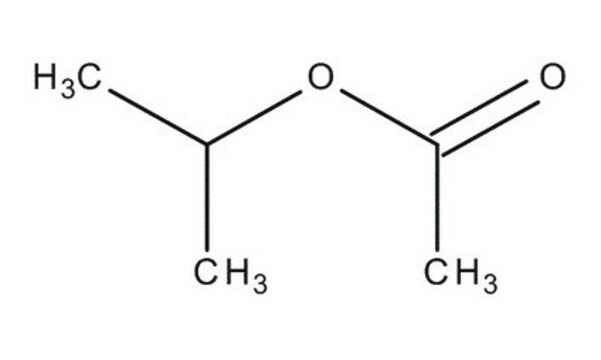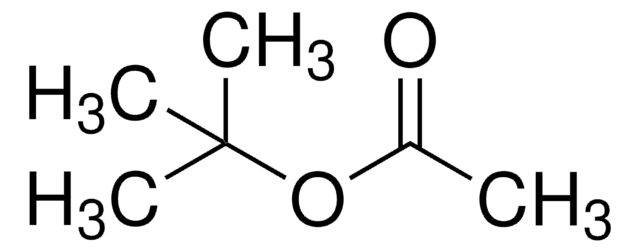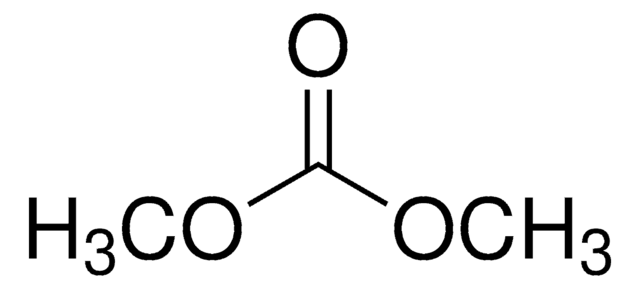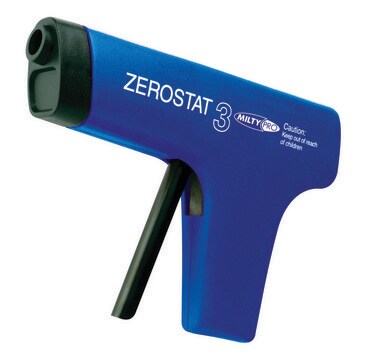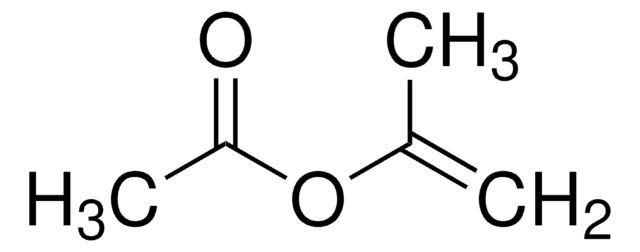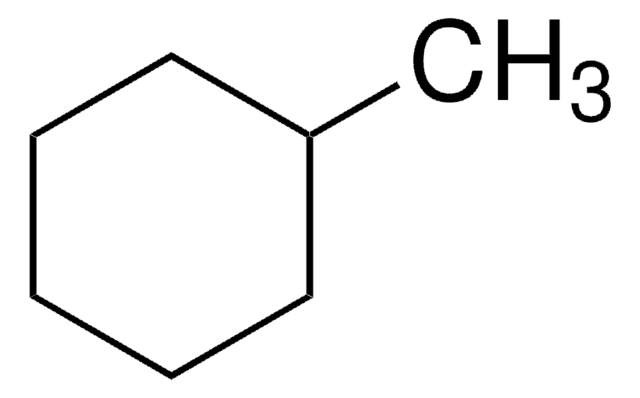537462
Isopropyl acetate
≥99.6%
Synonym(s):
IPrOAc, Acetic acid isopropyl ester
About This Item
Recommended Products
vapor density
3.5 (vs air)
Quality Level
vapor pressure
47 mmHg ( 20 °C)
Assay
≥99.6%
form
liquid
autoignition temp.
894 °F
expl. lim.
1.8 %, 37 °F
8 %
impurities
≤0.005% Acetic acid
≤0.1% Water
≤0.2% 2-Propanol
refractive index
n20/D 1.377 (lit.)
bp
85-91 °C (lit.)
mp
−73 °C (lit.)
solubility
water: soluble 31.9 g/L at 20 °C
density
0.872 g/mL at 25 °C (lit.)
SMILES string
CC(C)OC(C)=O
InChI
1S/C5H10O2/c1-4(2)7-5(3)6/h4H,1-3H3
InChI key
JMMWKPVZQRWMSS-UHFFFAOYSA-N
Looking for similar products? Visit Product Comparison Guide
Application
Other Notes
Legal Information
Signal Word
Danger
Hazard Statements
Precautionary Statements
Hazard Classifications
Eye Irrit. 2 - Flam. Liq. 2 - STOT SE 3
Target Organs
Central nervous system
Supplementary Hazards
Storage Class Code
3 - Flammable liquids
WGK
WGK 1
Flash Point(F)
41.0 °F - closed cup
Flash Point(C)
5 °C - closed cup
Regulatory Listings
Regulatory Listings are mainly provided for chemical products. Only limited information can be provided here for non-chemical products. No entry means none of the components are listed. It is the user’s obligation to ensure the safe and legal use of the product.
FSL
Group 4: Flammable liquids
Type 1 petroleums
Hazardous rank II
Water insoluble liquid
ISHL Indicated Name
Substances Subject to be Indicated Names
ISHL Notified Names
Substances Subject to be Notified Names
JAN Code
537462-100L:
537462-2.5L:4548174014653
537462-56L-P1-LS:
537462-50L-P2-LS:
537462-18L:4548173270005
537462-VAR:
537462-2L:4548173167770
537462-18L-CS:
537462-BULK:
537462-4L:4548173167787
537462-1L:4548173167756
537462-20L:4548173167763
537462-4X4L:
537462-200L-P2-LS:
537462-200L:
Choose from one of the most recent versions:
Already Own This Product?
Find documentation for the products that you have recently purchased in the Document Library.
Customers Also Viewed
Our team of scientists has experience in all areas of research including Life Science, Material Science, Chemical Synthesis, Chromatography, Analytical and many others.
Contact Technical Service